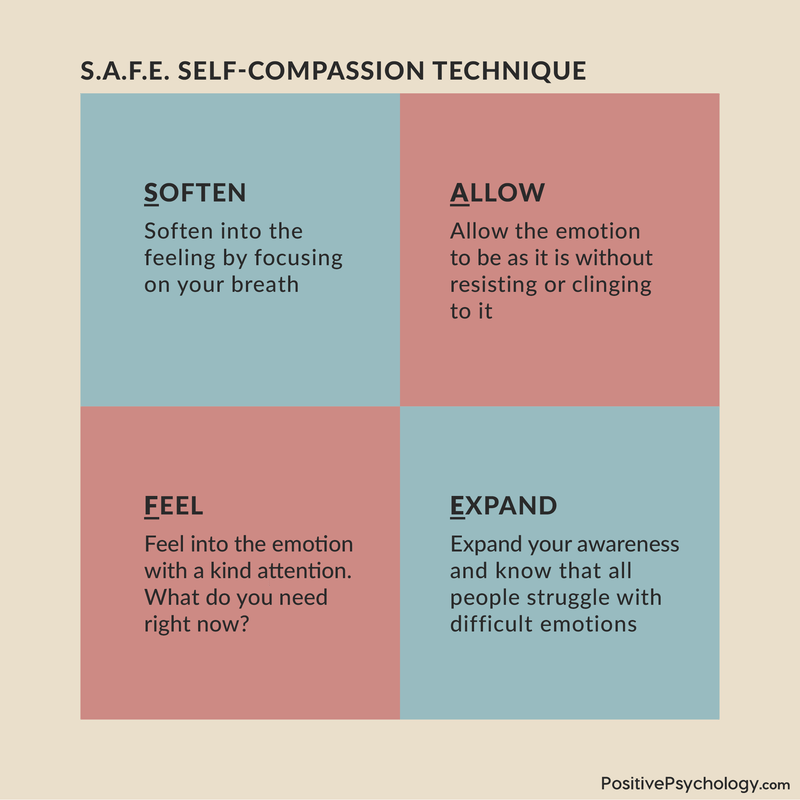A Look at the Research
There is a vast amount of research taking place in the area of compassion. Increasing caring behavior will benefit the individual, but also society as a whole. The benefits of compassion are far-reaching. Having the science behind this behavior is exciting.
Going back to Darwin
A brilliant analysis (Goetz, Keltner, & Simon-Thomas, 2010) found an intrinsic motivation for compassion across species. The very definition of compassion as an affective state defined by a subjective feeling, rather than compassion as an attitude.
This analysis also differentiated empathy from compassion, giving credence to the understanding that compassion is revealed in the action of trying to relieve the suffering of another. The evolutionary analysis finds that emotions are adaptations to survival and reproductive needs across species. This research sought to separate compassion from emotions, like love, to better understand a biological need for cooperation.
Darwin had proposed in Descent of Man, and Selection in Relation to Sex that for ultimate species survival, the community with the most sympathetic members would be the most likely to flourish. This proposition has been supported by observations across species and cultural divides.
The evolution of sympathy has enabled the continuation of species reproduction viability. Basically, the analysis concluded that Darwin didn’t just believe that “only the strong survive,” but more importantly “the most cooperative survive.”
Considering self-compassion
The role of self-compassion in academic achievement has been an interesting topic of research (Neff, Hsieh, & Dejitterat, 2005). The focus of undergraduate students on self-compassion rather than self-esteem (as was done in decades past) has been a better indicator of resilience and more positive affect after an academic failure.
Self-compassion has many benefits like self-esteem, but with fewer drawbacks (like tendencies toward narcissism). Professor Neff has also employed research in the field of compassion fatigue to aid helping professions in overcoming feelings of burnout.
Compassion research centers
The Center for Compassion and Altruism Research and Education at Stanford University is conducting an increasing number of research endeavors to better understand the implications of increased compassion in society.
Dr. James Doty founded CCARE to better understand and cultivate compassion and promote altruism. Dr. Doty’s research, along with many others at Stanford have sought to discover the implications of compassion on the brain and the heart through research in neuroscience, psychology, economics, and contemplative traditions.
CCARE has teacher training, educational events, and programs to spread this knowledge into society as a whole.
Compassion fatigue and trauma
As previously mentioned, approximately 40% of teachers report compassion fatigue in their helping profession. Mental health professionals have been researched extensively, but the research on compassion fatigue in educators is somewhat limited. However, some interesting work has been done highlighting secondary trauma in school personnel (Borntrager et al., 2012; VanBergeijk & Sarmiento, 2006).
Educators see more than just reading, writing, and arithmetic in their classrooms. When having to report trauma, as is required by law, many suffer from secondary trauma resulting in increased emotional stress.
Public education personnel is particularly at risk of developing symptoms of secondary trauma due to increased exposure and high reported levels of empathy and compassion.
Those who are more empathic will likely suffer higher levels of secondary experience of the trauma. Care and understanding of these educator’s emotional wellbeing is an area that requires further research and improvements in care for their emotional wellbeing.
Behavioral studies
The role of empathy in compassion is at the very foundation of prosocial behavior. A better understanding of empathy improves one’s ability to take action from a state of compassion. Research in empathy was done as early as 1902. Though not focused on children, research into prejudice (Stephan & Finlay, 1999) revealed interesting findings into possible improvements in intergroup relations by improvement in empathic awareness.
A very exciting controlled design study at the University of Wisconsin-Madison (Flook, Goldberg, Pinger, & Davidson, 2015) tested a Kindness Centered program to improve prosocial behavior in pre-school aged children. Over 12 weeks, children were taught mindfulness-based self-regulation skills. The results were exciting, as self-regulatory skills are a firm indicator of success over a lifespan.
The children in the study improved their interpersonal skills, increased prosocial behavior, and increased academic success. This malleable time of childhood is a profound area to improve mindfulness and prosocial activities. The capacity to regulate emotion and attention are indicators of school readiness.
Improvements in this area for children are indicative of improvements in school success. When these skills are attained in childhood, they are predictors of financial stability, educational attainment, and health in adulthood. More work is being done in application with regard to cultural diversity in this area of mindfulness as well.
Empathy
Empathy has been studied for a long time and remains confused when viewed from the lens of social justice and moral behavior (Decety & Cowell, 2015). There is an intersection between neuroscience and psychology and moral decision making.
Emotional contagion is a neurobiological and cognitive implication of affective empathic behavior. To take that down a peg from the “science” is to say that through empathic parental care, humans learn to think more about the perspective of others because they’ve learned it and are mirroring this behavior when witnessing it. This article looks at the complex task of cognition and its role in empathic behavior.
The ability to assess the rates of empathy in children has developed into several assessments. The KEDS (Kids Empathic Development Scale) has recently been developed.
Another predictor is the EmQue-CA (Overgaauw, Rieffe, Broekhof, Crone, & Güroğlu, 2017). The use of this questionnaire has been validated as a helpful predictor in the improvement of prosocial behavior, resulting in improved academic performance as well.
The assessment disentangles the three components of empathy and is better at predicting bullying behavior with the possibility of course corrections. It is a fascinating piece of work that pulls apart the complex actions of children and gives focus to the areas that need improvement.
Fear
A powerful piece of research (Gilbert et al., 2012) revealed a much-needed area of discovery in the fear of compassion and happiness. When children lack the attachment to empathic abilities, many self-criticizing behaviors erupt, which result in further psychological and emotional harm.
Further understanding of the necessary pathways to mindfulness and the ability to identify and self describe emotions in the self is a powerful piece in a better understanding of cultivating empathy.
Aggression
Another interesting piece of research (Zuffianò, Colasante, Buchmann, & Malti, 2018) was done in Switzerland. The study was done to better understand the co-development of sympathy and aggression in children aged 6-12.
It was found that children that have an underdeveloped sense of sympathy for others tend to elicit increased levels of aggression toward others. This is seen in behaviors that are both physically and emotionally aggressive behaviors. It is pointing to the fact that bullying behavior occurs when children do not have the cognitive or empathic ability to better understand the perspective of others.
What is Compassion Deficit Disorder?
The term compassion deficit disorder was coined by a professor at Wheelock College in Boston named Diane Levin (2009). It is used to describe children who act without empathy or regard for others. Professor Levin works in the field of early childhood development and has done research in the area pertaining to antisocial disturbances in behavior.
The behaviors elicited by children with this disorder are violent/ bullying types of behaviors. One can imagine the disruption to a group setting when this type of behavior is present. Children with this disorder are expressing their needs in a violent way due to their inability to appropriately and efficiently empathize or communicate with their peers.
These disturbances are revealed in different areas of development, as early as Kindergarten. Teachers have recently reportedly spending more time trying to keep their classrooms safe than getting to teach content to their students. When these antisocial behavior disturbances arise in the classroom, the entire group of students is affected.
Knowing that empathy develops in different phases during early childhood, has given rise to the questions of the effect of technology on this development. If a baby is soothed by a parent and the child is reacting to facial expressions, empathy develops through appropriate human interaction.
When a baby is soothed by a beeping or other form of technology, the baby is startled into being soothed, but empathy is not developed through social interaction.
When a child lacks empathy for others, they likely lack the ability to practice self-compassion as well. The resulting behaviors are violent and erratic. Lower self-efficacy and self-esteem further impact the child and all of those around him.
The amount of exposure to technology in early childhood has risen and the risks are far-reaching. A great deal of research is currently underway in an effort to assess the risk to the mental wellbeing of children and adults alike. Delaying exposure to technology as long as possible and instead encouraging appropriate, supervised interaction with peers is highly recommended.
There are not a great number of assessments to understand the level of empathy kids possess. The Kids Empathic Development Scale (Reid et al., 2013) was created for this very purpose. Prior to the creation of this scale, a greater understanding of the measurements of the elements of empathy in children proved difficult.
Understanding that underdeveloped empathic ability results in antisocial behavior, makes the deeper understanding of measurement in this subject vital. Early intervention in this area is key to building appropriate and effective interpersonal relationships. In positive psychology, the effective connection between human beings is a pathway to flourishing lives. Lowering the cases of compassion deficit disorder is vital.
A Look at Teaching Compassion in Education
Surely you’d agree that teachers are some of the most compassionate among professional workers. They witness all sorts of complicated societal and social issues.
Children come into their classrooms from all different kinds of backgrounds and present many different kinds of obstacles and perspectives.
With those obstacles come the needs of the entire classroom. The main job of teachers is keeping their classrooms safe while trying to improve academic performance. Conflicting family approaches become the ultimate melting pot for educators. How then, do educators teach compassion in a group setting with children from all walks of life?
Compassion benefits classrooms by contagion. Kinder, happier, and healthier students are present in classrooms with higher levels of compassion. Studies show that the more compassionate the teacher, the more easily students will learn.
Increased incidents of violence and other antisocial behavior in schools have been a very serious topic of study for improvement in education. What many have found is that the earlier children learn empathy and appropriate prosocial behavior, the fewer the incidents of bullying and antisocial behavior in later childhood.
The book Teaching Compassion: Human Education in Early Childhood by Mary Renck Jalongo, which is a part of a series of books about education in early childhood, outlines much of this research.
Research from the American Psychological Association in 2013 has shown that teenagers are inheriting the stress habits of adults. The higher the stress level, the lower the levels of dopamine.
A human in a compassionate state has higher levels of oxytocin, which in turn increases the levels of dopamine allowing the subject to relax. A classroom of cooperation versus a classroom of competition would likely promote better results in the attention of its students.
 If you claimed that there is an epidemic of bullying in our society, your claim would be affirmed by the drastic number of accounts of such behavior reported among our youth.
If you claimed that there is an epidemic of bullying in our society, your claim would be affirmed by the drastic number of accounts of such behavior reported among our youth.






What our readers think
My children seem to retain the most information when we read a book together that teaches and entertains. It always helps to be able to discuss it afterwards and apply it to their daily lives. We actually just finished a wonderful book that definitely focused on compassion and empathy. It is a wonderfully illustrated book called “Mia and Nattie One Great Team!” by Marlene Bell (https://www.marlenembell.com). This book is follows Mia taking a trip to her grandma’s farm and finding an newborn lamb out in the cold. She nurses the little lamb to health only to find the little lamb has shorter legs than the other lambs and a horn that sticks out straight (almost like a unicorn!). Mia really relates to the lamb because she has a hard time fitting in with kids her age. She names her Nattie and together they learn teamwork, compassion and self worth. I think I may have loved this book more than my kids. It is a wonderful gift and a book that teaches and entertains. Hope your readers will check it out!
Very well done and easy to understand so you can incorporate it so easily with children of all ages
Thank you for your comment Sandy. I agree completely. We all have a role to play in teaching compassion to children.
Good article. In today’s scenario teaching compassion to children is extremely important.